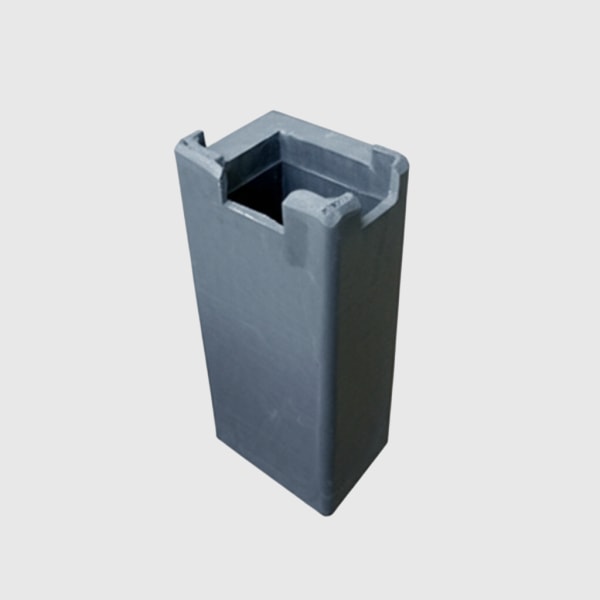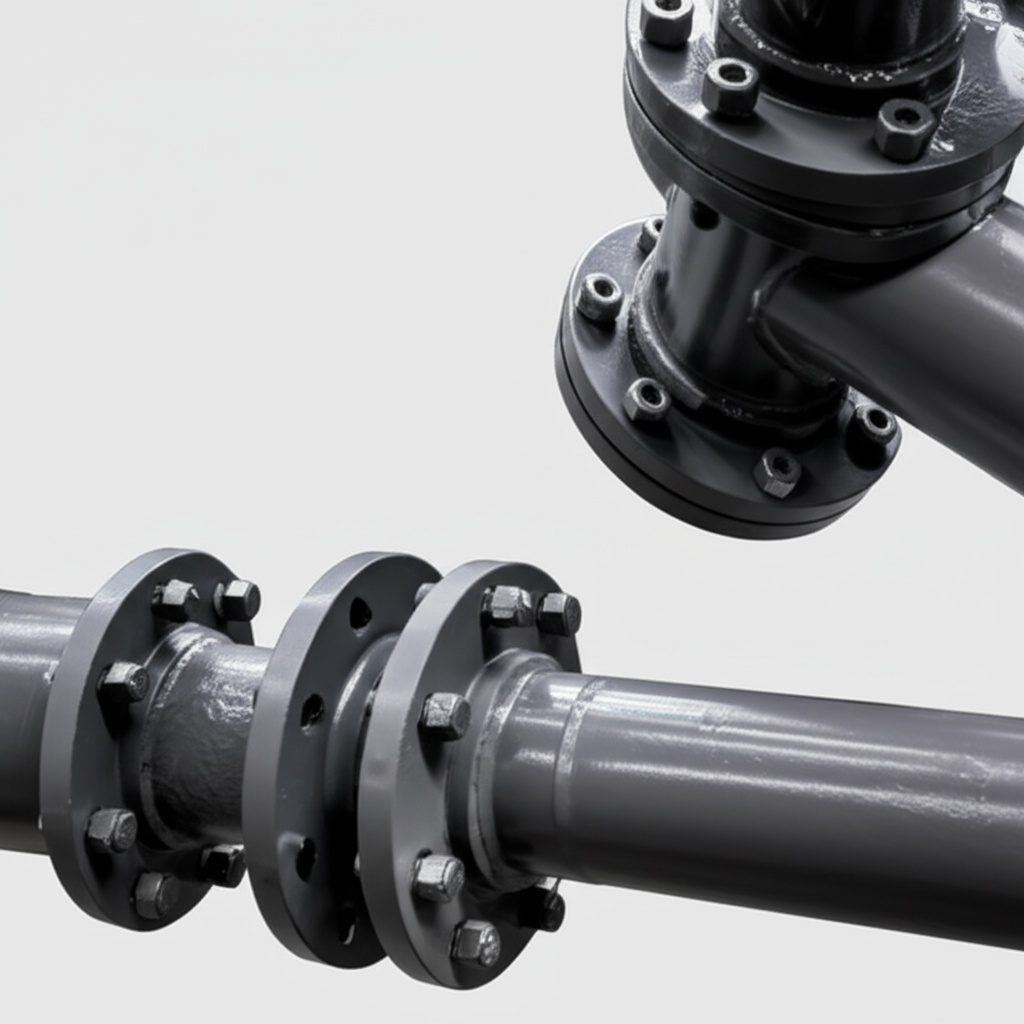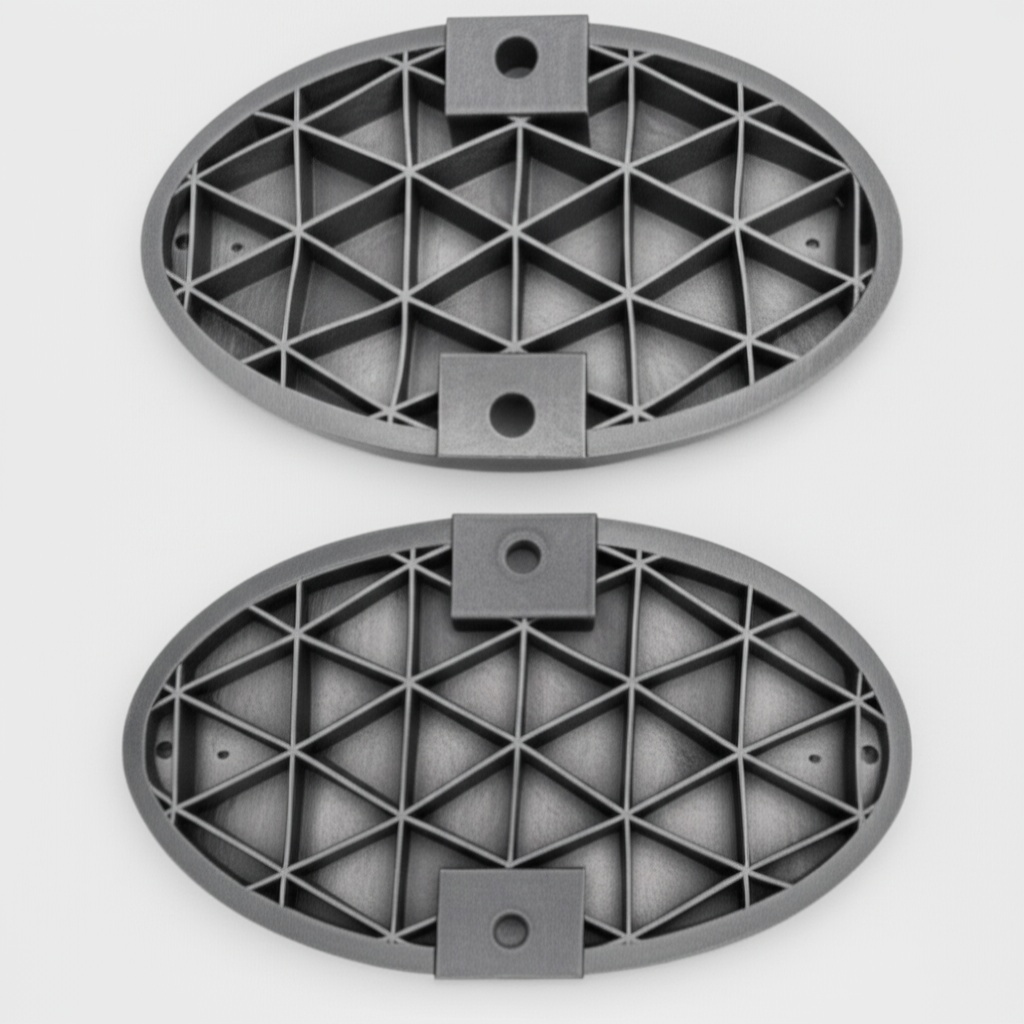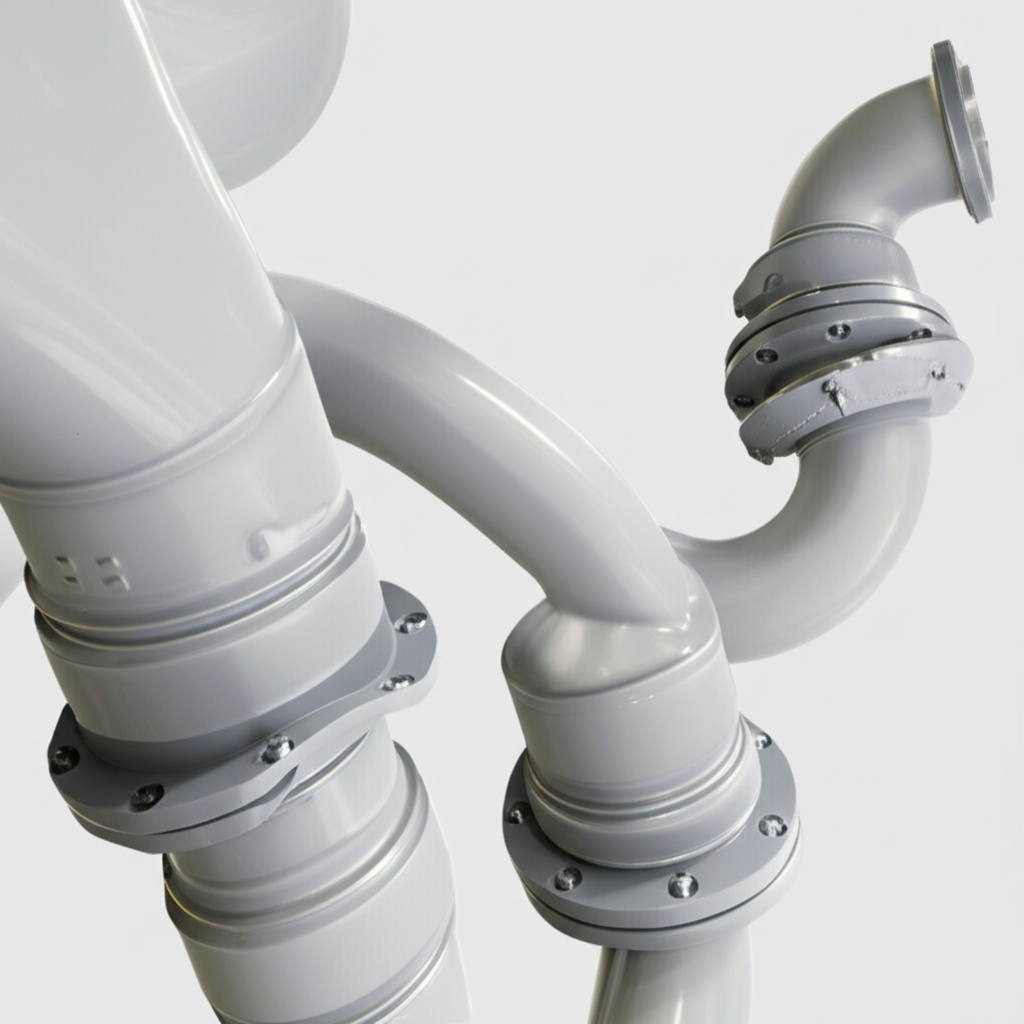Apparaat met siliciumcarbide burn-in en geautomatiseerde testapparatuur voor betrouwbaarheidskwalificatie bij 175-200°C

Haalbare toleranties en maatnauwkeurigheid:
Productoverzicht en relevantie voor de markt in 2025
Silicon carbide (SiC) apparaat burn-in en geautomatiseerde testapparatuur (ATE) bieden de hoge temperatuur, hoogspanning stressomgevingen die nodig zijn om vroegtijdige uitval te screenen en de levensduur onder zware omstandigheden te verifiëren. In vergelijking met traditioneel silicium vereisen de hogere elektrische veldsterkte en verhoogde junctietemperaturen van SiC gespecialiseerde ovens, stroomstressarmaturen, parametrische meeteenheden en veiligheidsconforme automatisering. De burn-in/ATE-platforms van Sicarb Tech kwalificeren SiC MOSFET's, Schottky-diodes, vermogensmodules en geïntegreerde vermogensfasen bij 175–200°C, waarbij de reële stress in de textiel-, cement-, staalen datakritische sectoren van Pakistan worden gesimuleerd.
Waarom het belangrijk is voor Pakistan in 2025:
- Faciliteiten ervaren omgevingstemperaturen tot 45°C en frequente spanningsdips/zwellingen; apparaten moeten worden gescreend op robuustheid voordat ze worden ingezet.
- UPS, VFD's, PV-omvormers en BESS vereisen voorspelbare betrouwbaarheid om OPEX te verlagen en ongeplande uitval te voorkomen.
- Gelokaliseerde kwalificatiecapaciteit vermindert de doorlooptijden en de afhankelijkheid van import, waardoor snellere uitrol voor industriële modernisering en de digitale economie wordt ondersteund.
- ESG- en energie-efficiëntiedoelstellingen versterken de behoefte aan langdurige, zeer efficiënte SiC-platforms die zijn bewezen door rigoureuze burn-in en geautomatiseerde betrouwbaarheidstests.
Sicarb Tech biedt kant-en-klare burn-in-systemen — HTRB, HTGB, vermogenscycli, dynamische schakelstress — en geautomatiseerde parametrische ATE met datalogging en analyse. Systemen zijn aanpasbaar aan RBSiC/SSiC-gebaseerde behuizing, waardoor realistische thermische paden tijdens stress worden gegarandeerd.

Technische specificaties en geavanceerde functies
Representatieve mogelijkheden (configureerbaar voor apparaatklassen en doorvoer):
- Hoge temperatuur burn-in (HTRB/HTGB)
- Temperatuurbereik: 25–200°C (±1°C uniformiteit binnen kamerzone)
- HTRB: Drain-bias tot 1,7 kV; lekstroombewaking tot nA; configureerbare stressduur (8–168 uur)
- HTGB: Gate-bias ±30 V met stroomcompliance; gate-lekstroomtrending
- Realtime delta-lekstroom- en uitvalcriteria met automatische uitschakeling per sleuf
- Vermogenscycli en dynamische stress
- ΔTj-regeling: 40–100 K per cyclus; tot 10^6 cycli; programmeerbare verblijftijden
- Stroompulsen tot 600 A/modulepositie; VDS tot 1,2–1,7 kV
- Schakelstress: 10–100 kHz, configureerbare dv/dt; SOA-bewaakte profielen
- Parametrische ATE
- Op SMU gebaseerde karakterisering: RDS(on) bij meerdere temperaturen, Vth, body diode VF/Qrr, lekstroom vs. temperatuur
- Curve tracer tot 3 kV / 600 A (gepulst); Kelvin-armaturen voor precisie
- Tests op moduleniveau: partiële ontlading (PD), isolatie (hipot 3–6 kVrms), dynamische weerstand en thermische impedantie (Zth)
- Verpakkingscompatibiliteit
- Armaturen voor discrete TO-247/TO-263, half-brugmodules, full-brugmodules en aangepaste intelligente vermogens
- RBSiC/SSiC warmtespreidingsarmaturen om thermische paden in de productie na te bootsen
- Gegevens, veiligheid en automatisering
- Traceerbaarheid: barcode/RFID per apparaat; per-sleuf data lake met tijdreeks
- Analyse: Weibull/Arrhenius modellen, vroegtijdige levensduurfout (ELFR) en dashboards voor driftanalyse
- Veiligheid: dubbele vergrendelingen, HV-ontlading, noodstop, boogdetectie, geïsoleerde behuizingen (IEC 61010)
- Integratie: MES/ERP-connectoren (OPC UA/REST), versiebeheer van testrecepten, audit trails
Nalevingdoelen: IEC 60749 (betrouwbaarheidstests voor halfgeleiderapparaten), JEDEC JESD22-serie (bijv. A104 power cycling, A108 HTOL), IEC 60068 milieutests en plantveiligheid in overeenstemming met PEC-praktijken.
Burn-In/ATE Voordelen voor industriële betrouwbaarheid en OPEX
| Het waarborgen van de betrouwbaarheid in het veld voor de hete, stoffige en net-volatiele omgevingen van Pakistan | SiC-gerichte burn-in en ATE (Sicarb Tech) | Generieke testopstellingen voor halfgeleiders |
|---|---|---|
| Temperatuurcapaciteit en -uniformiteit | 175–200°C met ±1°C zonebesturing | ≤150°C; grotere variabiliteit |
| Hoogspanningsvoorspanning en lekdetectie | Tot 1,7–3 kV; nA gevoeligheid | Lagere spanning; beperkte precisie |
| Realisme van power cycling | ΔTj tot 100 K met replica's van thermische paden | Basis cycling; slechte thermische replicatie |
| Gegevensanalyse en traceerbaarheid | Volledige genealogie van het apparaat en Weibull-modellering | Beperkte logs; handmatige rapporten |
| Veiligheid en doorvoer | Industriële vergrendelingen; multi-rack automatisering | Labschaal; lagere doorvoer |
Belangrijkste voordelen en bewezen voordelen
- Screening van vroegtijdige levensduurfouten: HTRB/HTGB en HTOL-protocollen leggen kindersterfte vast vóór verzending, waardoor het aantal RMA's en uitvaltijd in het veld wordt verminderd.
- Levensduurversnelling met gegevens: Power cycling en schakelspanning brengen missieprofielen in kaart voor nauwkeurige levensduurvoorspellingen onder omgevingsomstandigheden van 45°C en stoffige omstandigheden.
- Sneller op de markt: Geautomatiseerde recepten en armaturen verminderen de engineeringcycli; lokale tests verkorten de kwalificatie doorlooptijden voor Pakistaanse projecten.
- Veiligheid van productiegraad: HV-vergrendelingen en boogdetectie zorgen voor de veiligheid van de operator en audit-klare processen.
- Bruikbare analyses: Parametrische drift, lekkagetrends en Zth-wijzigingen activeren corrigerende maatregelen in verpakking, assemblage of leverancierspartijen.
Expertcitaat:
"High-temperature operating life en power cycling blijven de meest betrouwbare voorspellers van prestaties in het veld voor wide-bandgap-apparaten - mits het thermische pad de eindgebruiksomstandigheden realistisch weerspiegelt." - IEEE Power Electronics Magazine, Reliability and Qualification of SiC Devices, 2024
Praktijktoepassingen en meetbare succesverhalen
- Lahore datacenter UPS-programma:
- Implementatie van 200°C HTOL en power cycling voor SiC-omvormermodules vóór uitrol.
- Resultaten: ELFR verminderd met 60%; UPS-ruimte-efficiëntie 97,3%; twee potentiële veldfouten geïdentificeerd in burn-in via stijgende gate-lekkagetrend.
- Faisalabad textiel VFD-lijn:
- Aangepaste ΔTj=70 K cycling met RBSiC-armatuur; schakelspanning bij 40 kHz representatief voor weefgetouwen.
- Resultaat: 18% minder thermische trips in het veld, 25% langere service-intervallen; verbeterde koppelstabiliteit dankzij een strakkere RDS(on)-verdeling na screening.
- Cementfabriek hulpdrives, Punjab:
- HTRB bij 1,3 kV en screening op gedeeltelijke ontlading voor installaties met lange kabels.
- Impact: EMI-alarmen verminderd; incidenten met transformatorverwarming verminderd; voorspelde modulelevensduur +22–28% in missieprofielmodellen.
【Afbeelding prompt: gedetailleerde technische beschrijving】 Infographic met drie panelen: 1) HTRB/HTGB-oven met real-time lekkagegrafieken; 2) Power cycling cold plate met IR-thermografie die uniforme ΔTj laat zien; 3) ATE-console dashboard met Weibull-plots, ELFR en Zth-curves; annotaties voor voorspanningsniveaus, temperatuurinstellingen en veiligheidsvergrendelingen; fotorealistisch, 4K.
Overwegingen voor selectie en onderhoud
- Ontwerp van testprofiel
- Lijn HTRB/HTGB-spanningen uit met de apparaatklasse (650/1200/1700 V) en voeg marge toe; selecteer duur (24–168 uur) per betrouwbaarheidsdoel.
- Power cycling: kies ΔTj en cyclustellingen per missieprofiel (VFD vs. UPS vs. PV/BESS); controleer de equivalentie van het thermische pad met productiehardware.
- Armaturen en thermisch realisme
- Gebruik RBSiC/SSiC-gesteunde armaturen om thermische spreiding te matchen; kalibreer met IR en ingebouwde sensoren.
- Behoud TIM-dikte en -druk consistent met veldmontages.
- Parametrische bewakingsbanden
- Stel acceptatiecriteria in voor RDS(on)-drift, Vth-verschuiving, lekkagegroei en PD-begin; implementeer opnieuw testen bij mislukken-regels.
- Veiligheid en kalibratie
- Jaarlijkse kalibratie voor SMU's, HV-voedingen, temperatuursensoren; wekelijkse functionele controles op vergrendelingen en ontladingscircuits.
- ESD- en HV-PBM-training per IEC 61010 en lokale voorschriften.
- Gegevensbeheer
- Sla onbewerkte sporen en afgeleide KPI's op; koppel aan lot- en wafer-ID's; implementeer wijzigingsbeheer voor recepten en firmware.
Succesfactoren in de industrie en getuigenissen van klanten
- Succesfactoren:
- Vroege samenwerking tussen ontwerp, verpakking en betrouwbaarheidstechniek om stressrecepten te definiëren
- Thermische correlatie met eindgebruikbehuizingen (luchtstroom, stoffilters, positieve druk)
- Continue verbeteringslus van analyses terug naar leveranciers- en assemblageprocessen
- Lokale pilotlijnen om seizoensgebonden omgevingsinvloeden te valideren (piek zomerhitte)
- Getuigenis (Hoofd Onderhoud, Karachi staalservicecentrum):
- "Burn-in identificeerde marginale onderdelen vóór de inbedrijfstelling. Onze aandrijvingen vertonen nu consistent thermisch gedrag en minder beschermingstrips."
Toekomstige innovaties en markttrends
- Vooruitzichten 2025–2027:
- AI-ondersteunde anomaliedetectie in lekkage en dynamische weerstand om voorlopers van storingen te markeren
- Armaturen voor dubbelzijdig gekoelde modules die realistische MV-aandrijvingsspanning mogelijk maken
- 200 mm SiC-wafertraceerbaarheid van kristalgroei tot prestatieanalyses in het veld
- Geautomatiseerde mapping van gedeeltelijke ontlading voor toepassingen met lange kabels in grote fabrieken en installaties
Industrieel perspectief:
"De opschaling van SiC-adoptie hangt af van het sluiten van de lus tussen versnelde tests en veldanalyses - gegevens zijn de nieuwe betrouwbaarheidsvaluta." - IEA Technology Perspectives 2024, Power Electronics-hoofdstuk
Veelgestelde vragen en antwoorden van experts
- Hoe lang moet burn-in duren voor industriële implementaties?
- Typische vensters zijn 24–96 uur voor productie, 168 uur voor kritieke infrastructuur; we passen aan op basis van ELFR-doelen en missieprofielen.
- Lopen tests bij hoge temperaturen het risico goede onderdelen te beschadigen?
- Tests vallen binnen SOA met gecontroleerde marges; acceptatiecriteria en zachte oploop beschermen gezonde apparaten en stellen zwakke apparaten bloot.
- Kunt u volledig geassembleerde vermogensmodules testen, niet alleen losse componenten?
- Ja. We ondersteunen HTOL op moduleniveau, isolatie/hipot, PD-tests, Zth-meting en dynamische schakelspanning met realistische koeling.
- Hoe worden de resultaten geïntegreerd met onze QA/MES?
- Via OPC UA/REST API's. De genealogie, parameters en pass/fail-logs van elke eenheid worden naar uw MES gepusht voor audit en traceerbaarheid.
- Welke ROI kunnen Pakistaanse fabrieken verwachten van lokale kwalificatie?
- Typische ROI in 12–24 maanden via minder veldfouten, minder bezoeken ter plaatse, snellere inbedrijfstelling en verbeterde stabiliteit van de energieprestaties.
Waarom deze oplossing werkt voor uw activiteiten
De SiC burn-in- en geautomatiseerde testplatforms van Sicarb Tech kwalificeren apparaten bij de temperaturen en spanningen die ze zullen zien in de hete, stoffige en net-volatiele omgevingen van Pakistan. Door realistische thermische armaturen, rigoureuze veiligheid en analyse-rijke ATE te combineren, verminderen we vroegtijdige storingen, verlengen we de levensduur en stabiliseren we de efficiëntie in VFD's, UPS, PV en BESS - wat lagere OPEX en hogere beschikbaarheid oplevert.
Neem contact op met specialisten voor oplossingen op maat
Versterk uw betrouwbaarheidspijplijn met Sicarb Tech:
- 10+ jaar expertise in SiC-productie met steun van de Chinese Academie van Wetenschappen
- Maatwerkontwikkeling over R-SiC, SSiC, RBSiC en SiSiC, plus speciale burn-in-armaturen voor complexe pakketten
- Technologieoverdracht en diensten voor fabrieksoprichting om de kwalificatiecapaciteit in Pakistan te lokaliseren
- Kant-en-klare levering van materiaalverwerking tot geteste, gekwalificeerde producten met compliance-documentatie
- Bewezen staat van dienst met 19+ ondernemingen; snelle pilotopstellingen en receptoptimalisatie
Boek een gratis consult om uw 175–200°C kwalificatieplan, steekproefgroottes en ROI-model te definiëren.
- Email: [email protected]
- Telefoon/WhatsApp: +86 133 6536 0038
Reserveer nu Q4 2025 burn-in-capaciteit om prioritaire wachtrijen voor piek inbedrijfstellingscycli veilig te stellen.
Artikelmetadata
- Laatst bijgewerkt: 2025-09-11
- Volgende geplande beoordeling: 2025-12-15
- Auteur: Sicarb Tech Reliability Engineering Team
- Contact: [email protected] | +86 133 6536 0038
- Standaarden focus: JEDEC JESD22 (A104, A108), IEC 60749, IEC 60068, IEC 61010; afgestemd op PEC-praktijken en kwaliteits criteria van de NTDC Grid Code

About the Author: Sicarb Tech
We provide clear and reliable insights into silicon carbide materials, component manufacturing, application technologies, and global market trends. Our content reflects industry expertise, practical experience, and a commitment to helping readers understand the evolving SiC landscape.




